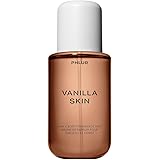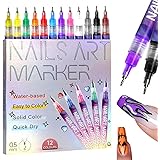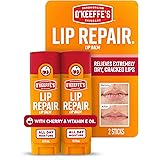Do you ever feel overwhelmed by the sheer variety of powder makeup options, wondering how each one should be applied for the best results? From loose setting powders to pressed foundations, and everything in between, the world of powder can seem complex. Understanding the specific techniques and tools for each type of powder is truly essential for achieving a polished, professional finish that lasts all day.
The video above offers invaluable insights into navigating these choices, drawing upon decades of expert experience to demystify powder application. It delves into the nuances of powder foundations, loose powders, and pressed powders, illustrating how different tools and methods can dramatically alter your final look. This guide is designed to complement the video, providing a comprehensive written resource that expands on key concepts, offers additional insights, and helps you master the art of powder makeup application.
Mastering Powder Foundation: Coverage and Finish
Powder foundation serves as a versatile cornerstone in many makeup routines, offering a range of coverage options and finishes that can be tailored to individual needs. It is often celebrated for its ability to provide a quick, polished appearance without requiring extensive layering. A distinct advantage of powder foundation is its dual utility: it can be worn completely on its own for a swift, effortless look or applied over liquid foundation to amplify coverage.
Loose Powder Foundation versus Pressed Powder Foundation
The form factor of your powder foundation significantly influences its ease of use and the final effect. Loose powder foundations, exemplified by products like BareMinerals, are typically known for their finely milled texture and can offer a more natural, buildable coverage. When applied, these powders often require careful handling to prevent mess, as product can easily become airborne. Distributing loose powder evenly across brush bristles before application is a crucial step to avoid blotchiness; tapping off excess or bouncing the brush on the back of the hand ensures uniform product loading.
Conversely, pressed powder foundations, such as those from Laura Geller or Jane Iredale, are formulated for convenience and portability. Their compact nature minimizes fallout and simplifies the application process, making them ideal for on-the-go touch-ups. While both types can deliver beautiful results, the choice often comes down to personal preference regarding application method and desired mess-free experience.
The Art of Tool Selection: Brushes and Sponges
The brush or applicator chosen for powder foundation application dictates the level of coverage achieved, acting much like a painter’s brush determines the stroke intensity. Understanding brush density and shape is paramount for controlling product deposition and creating the desired effect.
- Fluffy Brushes (Low Density): These brushes, with their loosely packed bristles, are ideal for a light, natural veil of coverage. They pick up and dispense less product, resulting in an airy, soft-focus finish. This application method is perfect for those desiring to simply even out their skin tone without obscuring its natural texture. A fluffy brush, like the BK Beauty 103, allows for gentle buffing in circular motions, ensuring a sheer, unnoticeable application.
- Kabuki Brushes (High Density): For those who desire more substantial coverage, a Kabuki brush is often the preferred tool. Characterized by its short handle and densely packed bristles, a Kabuki brush offers superior control and facilitates a more concentrated product application. These brushes come in various shapes, including flat-top for maximum coverage and rounded for a slightly softer, yet still robust, finish. When pressed into the skin and buffed in circular motions, a Kabuki brush can transform sheer coverage into a much more flawless, medium-to-full look. The Jane Iredale Kabuki brush, for example, is noted for its ability to intensify coverage beautifully.
- Powder Puffs or Sponges: When the goal is maximum coverage, even approaching full glam, a powder puff or a damp beauty blender becomes the tool of choice. These applicators are designed to press product firmly into the skin, a technique known as stippling, which builds coverage intensely. This method ensures that the powder is fused with the skin rather than merely sitting on top, providing an almost airbrushed effect. Using a triangular powder puff with a product like the Maybelline Super Stay powder foundation can create an “Instagram filter” finish, though its intensity might be too much for everyday wear or drier skin types.
Beyond Basic Coverage: Spot Correcting and Under-Eye Application
Powder foundation can also be skillfully employed for targeted corrections. Minor imperfections or persistent blemishes can be spot corrected by gently stippling extra product onto the area with a dense brush or sponge. This technique builds localized coverage without creating a heavy, cakey appearance across the entire face. Similarly, powder foundation can be used to lightly diminish the appearance of dark circles under the eyes. While it may not offer the intense brightening effect of a traditional liquid concealer, its powder form can minimize creasing, a common challenge with liquid products, especially for mature skin, provided the under-eye area is well-hydrated.
Enhancing and Setting: Loose Powders and Their Functions
Loose powders are indispensable for perfecting and setting your makeup, ensuring longevity and a desired finish. These versatile products are typically applied after foundation and concealer, serving a range of crucial functions from mattifying to pore blurring and brightening.
Translucent vs. Colored Loose Powders
Loose powders are primarily available in two forms: translucent and colored. Translucent powders, often appearing white in the pan but applying invisibly, are celebrated for their universal appeal. They are excellent for setting makeup, controlling shine, preventing creasing in areas like the nasolabial folds, and subtly blurring pores without altering your foundation shade. The Chanel loose powder is a prime example of a finely milled, high-quality translucent option.
Colored loose powders, such as those from Marcelle, offer the added benefit of slight color correction, contouring, highlighting, or even bronzing, depending on the shade chosen. While they can provide a boost of coverage or specific effects, they require more careful shade selection to ensure they complement, rather than clash with, your base foundation. For everyday setting and oil control, translucent powders are often considered more foolproof due to their undetectable finish.
Strategic Application for Optimal Results
The application technique for loose powder varies significantly based on skin type and desired outcome. For a natural, barely-there finish, a smaller, fluffy brush is often used to apply powder sparingly to the T-zone – the forehead, nose, and chin – where oiliness typically emerges. Under the eyes, any creasing from concealer should be gently stippled away before a light dusting of powder is pressed into the skin to set it.
For individuals with oilier skin who require more robust oil control, a powder puff is recommended. By pressing the powder firmly into the skin in oily zones, the product is packed in, ready to absorb excess sebum throughout the day. However, caution is advised for the under-eye area, especially for mature skin, as this technique can lead to excessive dryness and emphasize fine lines. A compromise often favored by those with combination skin is to press powder with a puff in oily areas and lightly dab it under the eyes with a softer brush.
The Art of Baking: A High-Impact Technique
Baking, a technique with roots in the drag community and theater makeup, involves applying a thick layer of translucent loose powder to specific areas of the face and allowing it to “bake” or set for several minutes before dusting it off. This method creates an incredibly bright, snatched, and heavily set look that is highly impactful on camera or under intense stage lights. Originating from the necessity for makeup to withstand harsh conditions and create dramatic facial sculpting, baking found mainstream popularity through celebrity makeup artists and social media influencers.
However, while baking can create a truly flawless appearance from a distance, it is often too drying for day-to-day wear, especially for dry or mature skin types. The intense application can accentuate fine lines and wrinkles up close, making it less suitable for real-life interactions. If experimented with, it should be done thoughtfully, understanding its specific visual effects and potential drawbacks for different skin conditions.
Embracing Luminosity with Loose Powders
Beyond mattifying and setting, certain loose powders are formulated to impart a beautiful luminosity or radiant glow. These luminous powders can be applied in several ways to enhance the complexion. For dry skin, a finely milled luminous powder can be swept across the entire face as a delicate veil, creating an overall healthy glow. Alternatively, for a more targeted effect, it can be applied as a highlighter to key areas like the cheekbones, brow bone, and the center of the nose, using a small, precise brush like the Rephr Number 19.
For those who desire both oil control and a touch of radiance, a mattifying powder like Huda Beauty can be applied to oily zones (e.g., around the nose, chin, and forehead to minimize pores and prevent shine), followed by a luminous powder strategically placed on the high points of the face. This creates a balanced complexion where shine is controlled in problem areas, while a healthy glow is accentuated elsewhere.
Pressed Powders: Convenience and Control for Touch-Ups
Pressed powders that are not formulated as powder foundations serve a distinct, yet equally important, role in makeup maintenance. These lighter consistency powders are primarily designed for mattifying shine and offering quick touch-ups throughout the day without adding substantial coverage or making the makeup appear heavy.
Translucent Pressed Powders for Shine Control
Translucent pressed powders, such as the Rimmel Insta Fix & Matte, are exceptionally valuable for managing shine discreetly. Their clear formulation ensures that they can be reapplied multiple times without altering the underlying makeup color or creating a cakey texture. These compact powders are perfect for carrying in a bag, allowing for quick dabbing motions to absorb excess oil in shiny areas. It is crucial to press, rather than rub, the powder into the skin to avoid smearing existing makeup and ensure a smooth, mattified finish.
Colored Pressed Powders for a Coverage Boost
While most pressed powders are typically matte, some colored options are available. These can offer a slight boost in coverage alongside their mattifying properties, which might be desirable for some. However, using a colored pressed powder for touch-ups carries a small risk of color buildup, potentially leading to a slightly cakey appearance if over-applied. The application technique remains consistent: using a small powder puff or sponge, the product should be blended on the back of the hand first to ensure even distribution, then pressed gently into the shiny areas of the face.
The Unifying Power of Setting Sprays
Regardless of the type of powder used, a common concern is preventing a dry or overly powdery finish. A setting spray acts as a remarkable bridge, helping to ‘melt’ powders seamlessly into the skin, making the entire complexion appear more unified and skin-like. Products like Caudalie Beauty Elixir, Urban Decay All Nighter, or Charlotte Tilbury’s setting spray can be lightly misted over the face after powder application. This crucial step helps to eliminate any visible powdery residue, ensuring that the makeup looks cohesive and natural, blending all the layers together into a harmonious finish.











